Camera Tripods
Invest... It's Essential Equipment!
Yes, photographers absolutely need camera tripods! You almost always need one.
Why do a lot of your pictures look soft? ..... Assuming you weren't going for that look!
First off, what about those shaky hands holding the camera? You might think you're as steady as a rock, but you're wrong!
Add that to all the parts that move inside the camera when you press the shutter and it's a wonder any image is ever sharp!
All excellent reasons for using a tripod!
Camera tripods buy you time to organize your thoughts, double check your exposure, focus, compose your image, and check for litter in your scene. Oops... there's a discarded coffee cup on the ground, walk over and pick it up. Your camera isn't going anywhere!
One Size Doesn't Fit All. Find the Best Tripod for You.
A good first step is to scan some tripod reviews written by professional photographers... the people who know them the best. Just "google" camera tripod reviews.
Here's a summary by dpreview.com for five of the best tripods for under $450. Good place to start.
After you've read a few reviews and have a handle on which way you're leaning, take
a trip to your local camera store and get some
"hands-on" experience. Don't be shy about talking to the folks in the camera store who really know the equipment. That's what they're there for.
When you're shopping for camera tripods, just like clothes.... "try 'em on for size". If they only extend to chest level - pass them by. But, if your camera sits at eye level without raising the center column, congratulations, it fits.
A tip about that centre column. If you raise it, there's the possibility of vibration and instability (especially on a windy day) - use your tripod legs, if possible, so you have that solid base. If you still need height, use the centre column.
Look for camera tripods with shorter center columns! A long one is just extra weight and if you like to do macro work, especially with flowers, that column interferes. It prevents you from getting super close to the ground.
Remember, quality comes with a price. A good camera tripod will be with you for life and it's a serious investment!
Think About Price and Weight When You Buy a Camera Tripod
Your budget is a major consideration and you'll have to balance that with how far and how long you're carrying it around.
- Price factor - less expensive OR more expensive
- Material - aluminum OR carbon fiber
- Weight - staying in your own yard or carrying it long distances
All things being equal, aluminum is heavier than carbon fiber and it can be tiring to haul around if you're hiking up and down hills. On the positive side, it's less expensive.
I've used an aluminum Manfrotto since photography school. I kept it when I opted for a carbon fiber model. It stays at home and I travel with the lighter weight carbon fiber tripod.
The weight factor
is a big issue when you're traveling by plane. You can choose to pay for
extra bags or take less gear with you. You should never pack
photography gear or computer equipment in your checked luggage.That's
just asking for trouble!
Every trip I have to make decisions about what lenses and cameras to take on flights. It won't get any better.
Here's another major issue. Carrying your tripod around for long periods of time on a cold day is a major bummer... carbon fiber doesn't freeze so much as aluminum does. An aluminum tripod sucks all the warmth right out of you on a cold day. Lots of personal experience there!
Try taping a strip of thick, soft material around the top legs so there's some warmer padding for your hands. (Ah yes, the joys of duct tape!)
It also helps to put it back in the bag, but that can be a waste of time - attaching and taking apart again and again.
Which Tripod Model Suits Your Needs?
Compare materials, prices and specs. Some of the camera tripod manufacturers with excellent products are Manfrotto, Gitzo, Slik, Giottos, and Joby (Gorillapods). This is just a sampling and you'll find lots more brands out there.
Row 1 of the table shows 5 brands / models of a variety of tripods.
Row 2 is the material the tripod is made of.
Row 3 - the height that the legs reach without raising the centre post.
Row 4 - the weight of the tripod.
Row 5 - how much weight (camera and lens) the tripod will support.... though, with larger telephoto lenses, you might want to use a tripod lens support for stability.
Row 6 - a range of prices I found (September, 2014) on 3 or 4 websites. Amazon was one of those.
|
Manfrotto |
Manfrotto |
Gitzo GT-2541EX Series 2 |
Slik Sprint Pro II Tripod with head |
Joby Gorillapod |
|
Carbon Fiber |
Aluminum |
Carbon Fiber with G-lock |
Aluminum |
Aluminum and plastic |
|
57.5 in / |
55.9 in / |
53.1 in / |
51.6 in / |
9 in / |
|
3.64 lb / |
5.5 lb / |
4.1 lb / |
2.07 lb / |
1.1 lb / |
|
11 lb / |
15.5 lb / |
26.5 lb / |
4.5 lb / |
11 lb / |
|
US $250 - $360 |
US $ 200 - $234 |
US $630 - |
US $80 - |
US $82 - |
The Gorillapod Focus and Slik come with a head. Heads for the other tripods are an additional expense. In my experience, they are about the same cost again as the camera tripod legs.
* Price depends on which head you choose with the tripod legs.
** Gorillapod Focus comes with a ballhead.
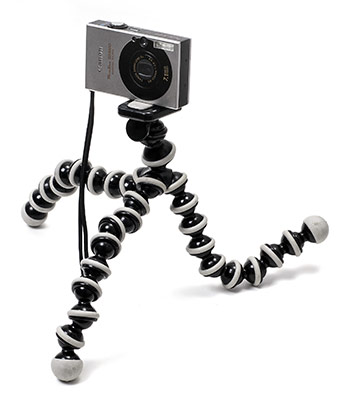 "Gorillapod-with-camera" by Evan-Amos - Licensed under Public domain via Wikimedia Commons "Gorillapod-with-camera" by Evan-Amos - Licensed under Public domain via Wikimedia Commons |
Speaking of which... this cute thing is the Gorillapod. He's twisty and flexible so you can wrap him around a branch or a fence post. He comes in several sizes... a light-weight for pocket cameras and a heavy-weight for a DSLR. Buy one strong enough for both your camera body and lens. They aren't stable enough for a heavy lens... But they're sure a lot of fun. |
Camera Tripod Heads - Get the Right One for the Job
Check out the different types
of heads. That's the top part that holds your camera and attaches to the tripod. Talk to a salesperson about the kind of photography you're into. A ball head serves a different purpose than a panning head. Buy the right one for type of photography you do most and one that feels most comfortable for you.
|
A ball head like this Manfrotto can hold a heavy weight. It gives a nice flowing movement of your camera. But after a panning head, it took me awhile to get used to adjusting it. Do more research in tripod heads before you decide which is best for you. This isn't an indepth review. If you plan on buying one online, it's really best to go to some camera stores and try out a few you're interested in. You may be sorry buying one sight unseen. |
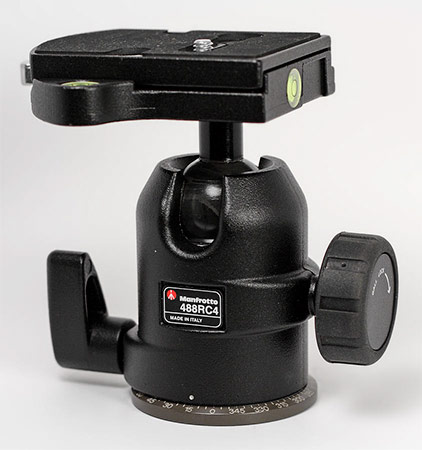 "Manfrotto 488 RC4" by Nebrot - Own work. Licensed under Creative Commons Attribution-Share Alike 3.0 via Wikimedia Commons - http://commons.wikimedia.org/wiki/File:Manfrotto_488_RC4.jpg#mediaviewer/File:Manfrotto_488_RC4.jpg "Manfrotto 488 RC4" by Nebrot - Own work. Licensed under Creative Commons Attribution-Share Alike 3.0 via Wikimedia Commons - http://commons.wikimedia.org/wiki/File:Manfrotto_488_RC4.jpg#mediaviewer/File:Manfrotto_488_RC4.jpg |
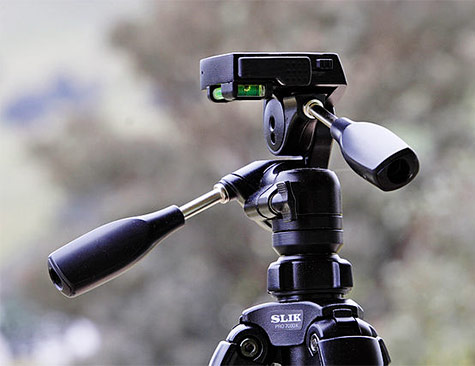 "Slik pro 700DX". Licensed under GNU Free Documentation License 1.2 via Wikimedia Commons - http://commons.wikimedia.org/wiki/File:Slik_pro_700DX.jpg#mediaviewer/File:Slik_pro_700DX.jpg "Slik pro 700DX". Licensed under GNU Free Documentation License 1.2 via Wikimedia Commons - http://commons.wikimedia.org/wiki/File:Slik_pro_700DX.jpg#mediaviewer/File:Slik_pro_700DX.jpg |
Here's a tilt panning head. If you like to shoot a moving object (like a dog running along the beach), this is what you want. You "pan" the camera to follow the dog with the camera while you take the picture. The water will be blurred, the dog will be perfectly in focus. At least, that's the plan! |
Before you leave on a trip, find out if you can rent a tripod at your destination. After flying with a tripod many times, I am coming to realize the sanity in renting!
Tabletop Tripods
A tripod that sits on a table can be exactly what you need. Stock photographers use them for food or product photographs.
Their name says it all! They're camera tripods on a smaller scale and they sit on top of a table or desk.
They're more convenient and less expensive than their big boy cousins. Some even fit into your pocket, but...
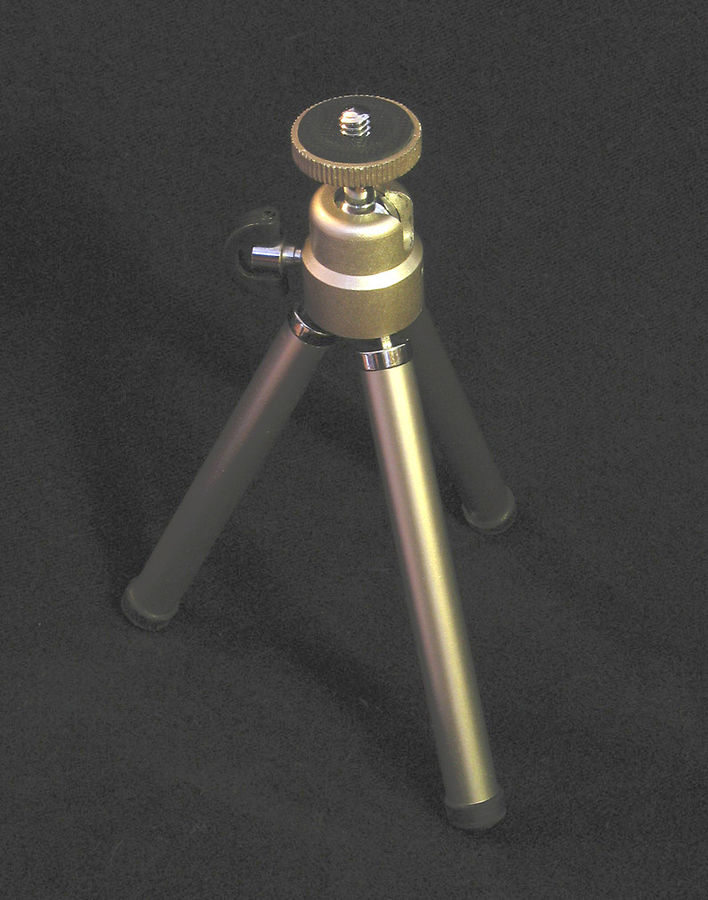 "Tabletop tripod". Licensed under Creative Commons Attribution-Share Alike 2.0 via Wikimedia Commons - http://commons.wikimedia.org/wiki/File:Tabletop_tripod.jpg#mediaviewer/File:Tabletop_tripod.jpg "Tabletop tripod". Licensed under Creative Commons Attribution-Share Alike 2.0 via Wikimedia Commons - http://commons.wikimedia.org/wiki/File:Tabletop_tripod.jpg#mediaviewer/File:Tabletop_tripod.jpg |
Get one that's going to hold the weight of your camera and lens. If it's not stable, you might as well hand hold your camera. Get a solid, good quality tabletop tripod. Always fasten your camera securely to it. Then use a remote control or the timer on your camera. Either of those will decrease camera movement and do away with camera shake. Check online reviews and good luck in your quest. |
I sympathize when you say you feel like a pack horse! Still.... carry a tripod and all it's related paraphernalia! I'm always moaning about carting one around but the results are worth it.
Having said all that.... there are places you can't, or shouldn't, use one. Maybe because of safety issues, or they're prohibited, or just to be polite.
And there are work-arounds ....
Monopods
One solution for when a tripod can't be there for you. A monopod plus your two legs equals a tripod!
|
When you just can't bring a tripod along, opt for a monopod. If you're steady enough holding it, and your shutter speed is fast enough, you can get crisp, focused shots. If you move your legs slightly apart, you can set the monopod in a position to make a "tripod" out of it and your two legs. Not as good as that stable 3 legged deal, but it holds the camera in place. A monopod can sometimes be the answer for travel, but it's never as good as a tripod if you have heavy lenses! Okay... not a great fix for low light and slow shutter speeds. |
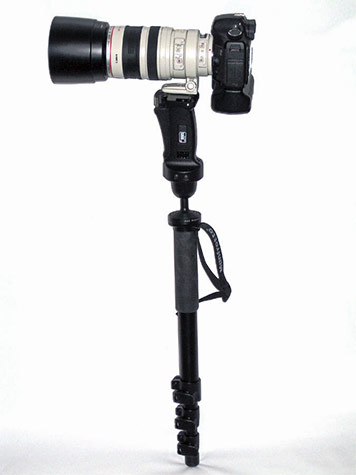 "Monopod". Licensed under Creative Commons Attribution-Share Alike 2.5 via Wikimedia Commons - http://commons.wikimedia.org/wiki/File:Monopod.jpg#mediaviewer/File:Monopod.jpg "Monopod". Licensed under Creative Commons Attribution-Share Alike 2.5 via Wikimedia Commons - http://commons.wikimedia.org/wiki/File:Monopod.jpg#mediaviewer/File:Monopod.jpg |
No Camera Tripod? Here Are Some Tricks
Two legs aren't as stable as three, but work with what you've got! Here are my suggestions to do away with fuzzy photos.
- Look around you for a tree trunk, a fence post, or a wall. Lean your back firmly against it. Bring your arms in front of your chest, against your body and hold your camera in front of your face. Adjust your camera, no quick movements. Get focused (you and your camera!) and take a deep breath in. Exhale just a bit - not completely. You'll be stable long enough to press the shutter -- gently and smoothly. Keep holding the camera steady and slowly release the shutter. You can start breathing again after you hear the shutter close. Practice until it becomes automatic.
- Nothing to lean against? Okay. Move your feet apart. Legs together, you're an unstable monopod! Legs apart -- you're a more stable Bipod! Test it -- hold your camera like you're going to take a picture. Don't bend your knees or you'll get wobbly. Remember those Weebles that wobble? Now apply the breathing technique. Breath in, let a little out -- smoothly and gently press the shutter -- and breath again.
- A rock makes a stable camera support. You might want to put something soft on it so your camera doesn't get scratched.
- Any fences close by? Rest your camera on a fence post -- another excellent stabilizer. If the fence railing isn't wide enough to set your camera on it safely, then lean both elbows firmly on top, and hold your camera steady. You guessed it - that breathing technique again! Deep inhale, let some air out, hold still, slow and steady -- press the shutter. You're getting good at this.
Now you're on your own. When you don't have a tripod, use your environment and your imagination. Ready -- steady -- go!
Camera tripods are an absolute MUST, Don't put off buying one. Buy one before you buy the next lens or set of filters. Wait till you see the difference one makes to your
photos!
Flower Photography Home › Photo Equipment › Camera Tripods
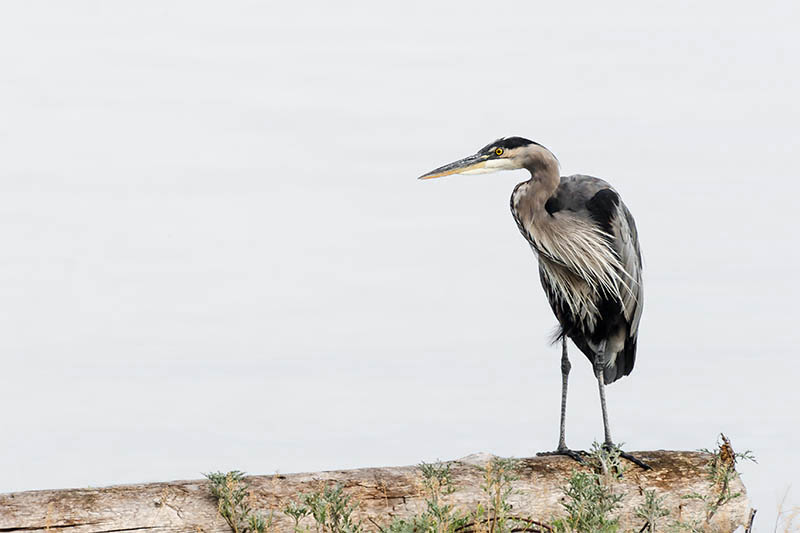


New! Comments
Please leave me a comment in the box below.I'd love to hear your stories, share your photos and read your comments about this page.